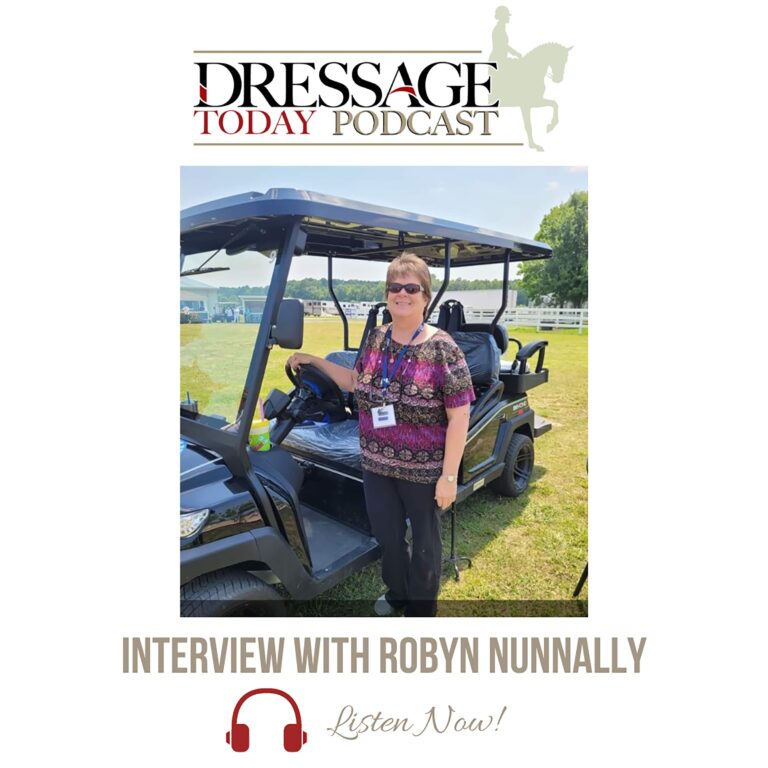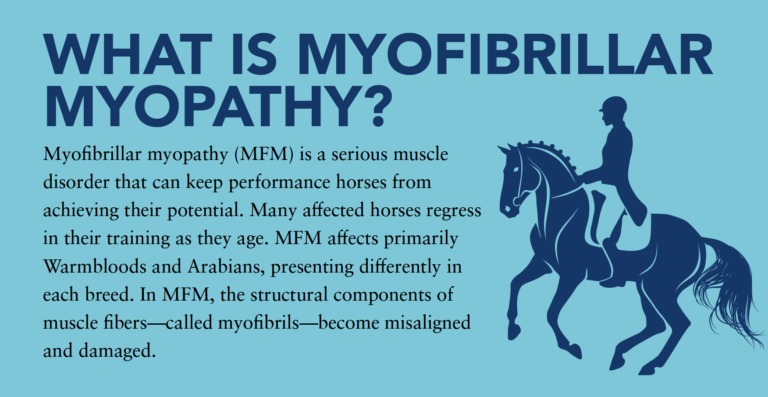Riding dressage is a bit like dancing or martial arts and has a lot to do with your posture and how you control your body. There is a dressage stance that should be the backbone of your position: ears, shoulders, hips, heels—all in a vertical line perpendicular to the ground—with the toes pointed forward and the heels down.
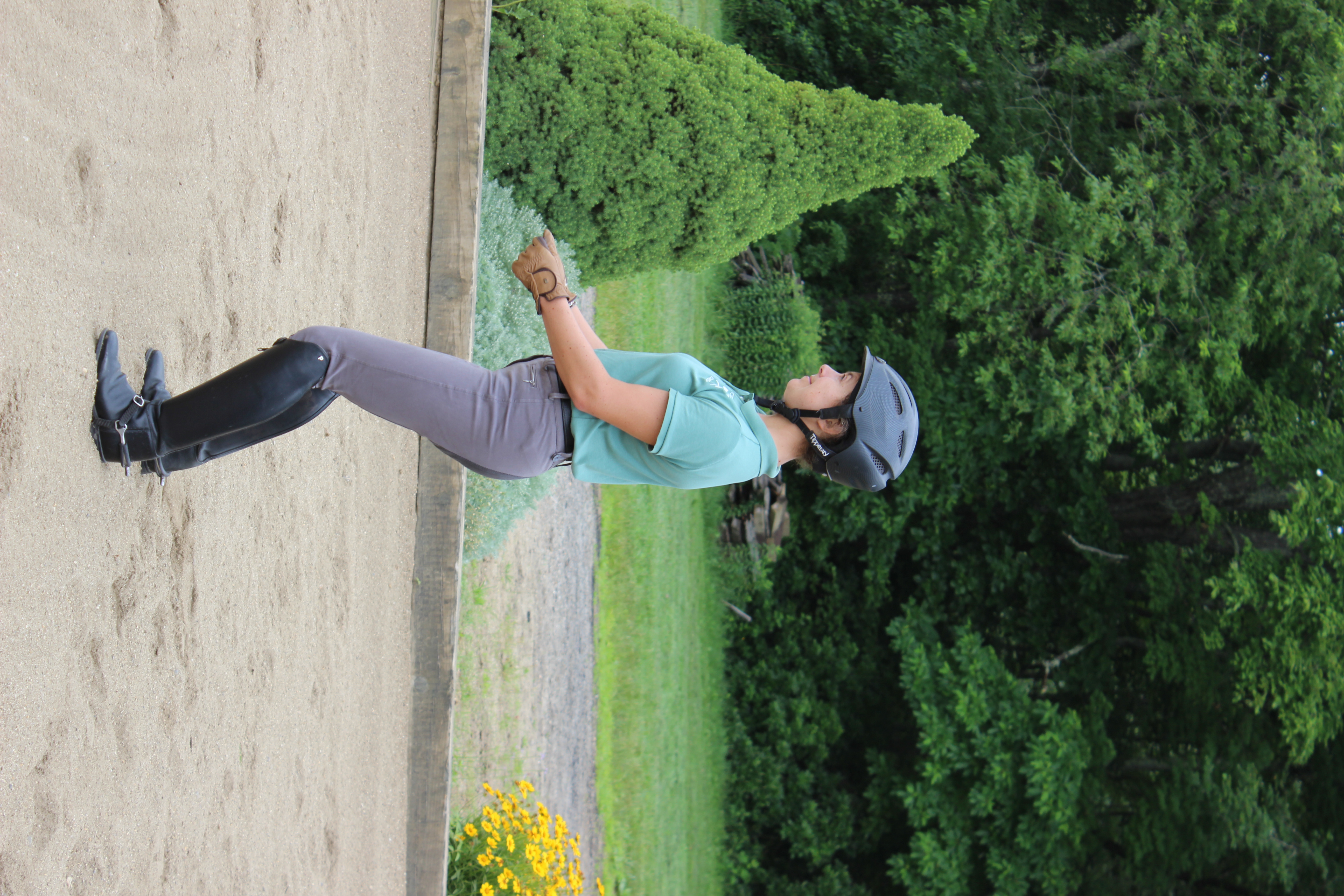
From there, the basis of a position that is effective is a seat that works independently from the rider’s legs, hands and body. The establishment of this effective seat begins with work without stirrups. An independent seat is what allows you to have invisible or, as the FEI says, imperceptible aids that are effective and quiet.
When you don’t sit still or quietly, your aids become loud. Imagine you are at a rock concert with music blaring. Any time you want to talk, you have to yell. Think of your position as that rock concert; if it is loud and noisy, it is impossible for your horse to hear the nuances of your conversation. The best position is one that creates an environment like a library—quiet, peaceful and in harmony with its surroundings. If your position is “library quiet,” your horse will always be able to hear what you are saying clearly and concisely.
Your hands should be carried just above the withers of your horse, about the width of his mouth apart. This ideal has some small variations, but none that should take you too far off the beaten path. I like to think of this hand position as “home base,” so that anything I do or any correction I make always results in my hands returning quickly and quietly back to this resting position. The ideal hand position is one that creates a straight line from your elbow to your hand and then to the horse’s mouth, with your elbow remaining at your side. Your elbow needs to work like a giant rubber doughnut, much like the one on side reins, in order to help create elasticity in the contact. The elbow should be able to swing freely forward or back like a spring-loaded hinge and always return to the same resting position, which is, again, at your side. The rider’s hands stay closed on the rein in order for the contact to pass to the elastic elbow and, in turn, be easily translated by the horse. Your elbow can swing far more than your hand can open or close, so by keeping the fingers closed around the rein, you are offering the horse a more forgiving contact than one with an open hand.
Your leg position influences your center of gravity and thus your balance. The longer leg position of dressage riders helps to lower the center of gravity into that of the horse. Your leg should hang loose and long, draping down from your hip like a wet towel around the horse’s side, without gripping or pinching. It feels like it is melting down around the horse’s side like wax off a candle. Your heels fall directly below your hip, bringing your lower leg into what I refer to as the “neutral position.” The stirrup length should be adjusted to allow bend and angle in the hip, knee and ankle joints so they can move up or down more or less. In the end, the ability to keep your shoulder, hip and heel aligned and your heels down is your best guide to knowing if the stirrups are adjusted correctly.
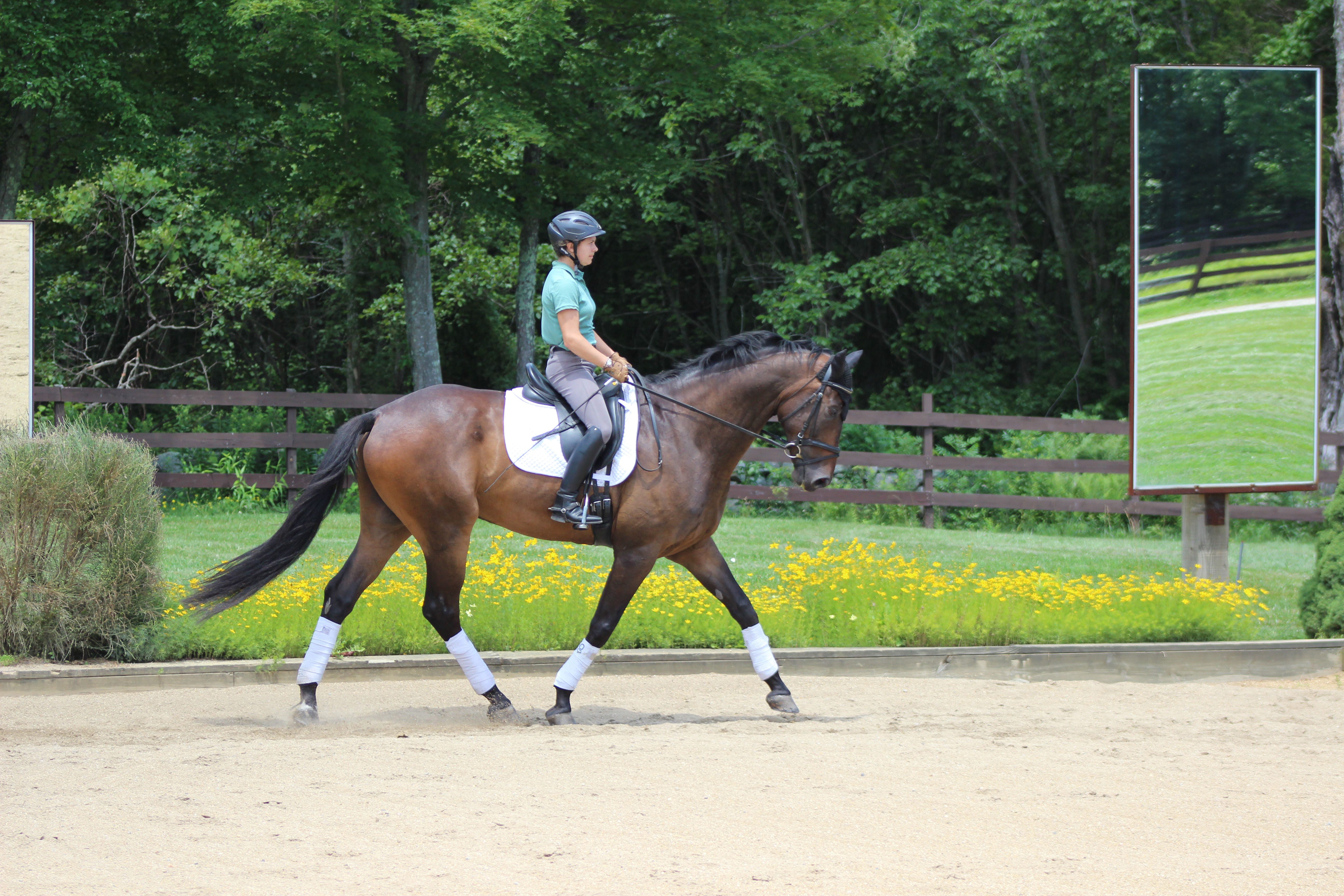
Referring back to the stance when mounted, remember you should sit so that if your horse were to instantly disappear out from under you, you would land standing on your feet, upright and in balance, not falling backward or forward.
The part of the horse’s body that creates or resists softness in the contact is the relationship between the poll and jaw. The horse’s poll also works like a spring-loaded hinge, which, in turn, connects the rider’s body through the bit to the horse’s mouth through our arms and hands. Any bounce, bobble or jiggle that your body might have will travel that pathway right into the horse’s poll and can, in turn, “rust” that hinge. The more soft and consistently steady, yet elastic and forgiving, you can be in the rein, the more the poll can work like a hinge and the more supple the contact can become. A seat that works independently from the hand helps facilitate this ideal.
A loose, swinging, independent seat is often referred to as a “deep seat.” It is a must for every dressage rider and something that we should all take the time to develop. In the end, you and your horse should look like one unit, as if you’ve plugged your seat into the saddle. It is true that the better you sit, the better your horse goes. The loose, yet controlled rider will always be able to influence more easily than a rider who is not.
Try this: I often train and work my horses with my reins in one hand, in much the same way you would salute at the beginning or end of your dressage test, letting your loose hand drop by your side. Test yourself to see if your horse will stay on the bit for a circle or two in either direction at walk, trot (posting or sitting) or canter. It’s a great way to test your training and your horse’s understanding of elastic contact and acceptance of the bit.
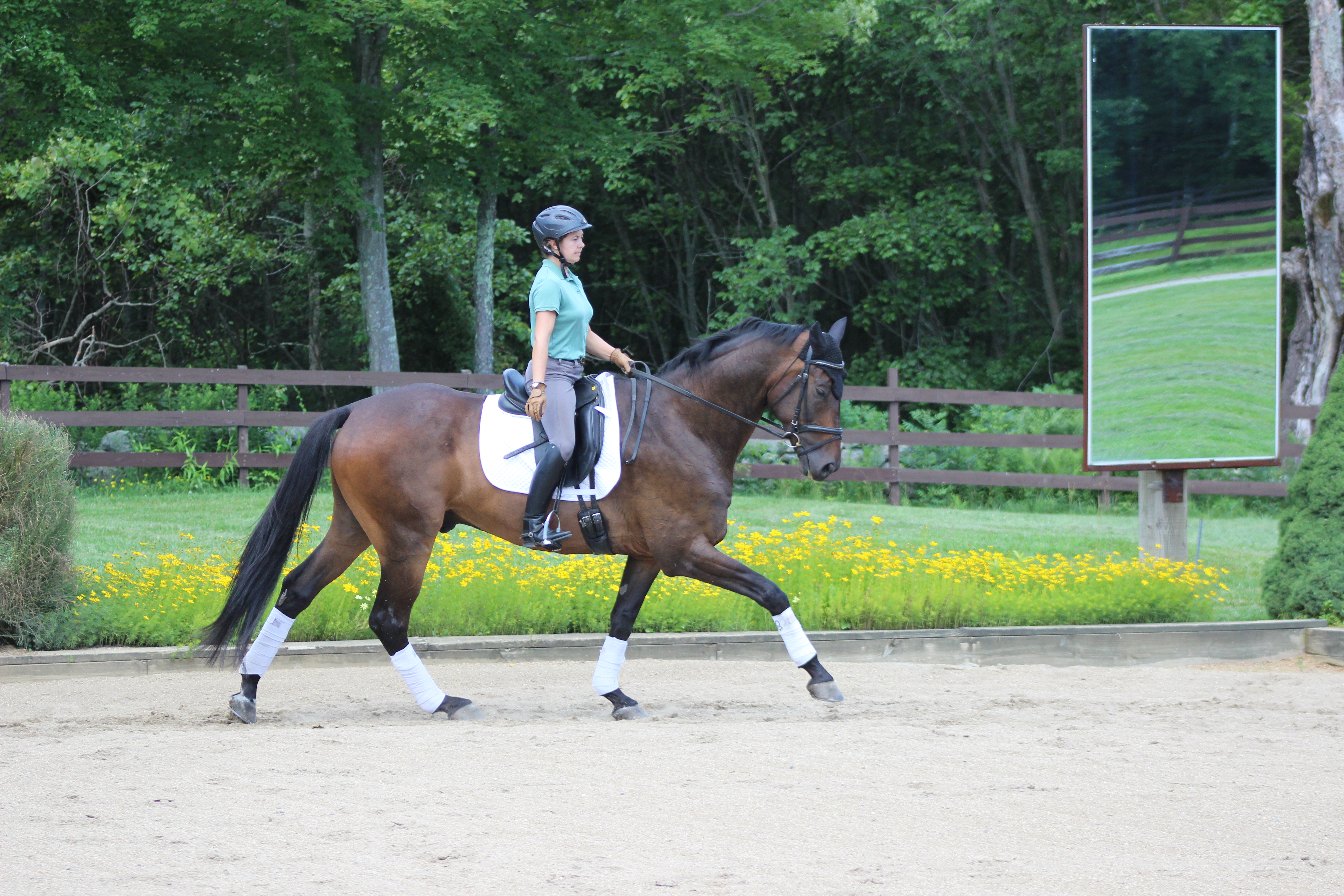
Try this: Have a friend take about 15 photos of you riding so you can check your basic position. They don’t have to be high quality or taken at the perfect moment. Sit the trot and then canter around the arena; then do a survey of your position. Are your heels down and under your hips? Could your horse vanish out from under you and would we find you standing upright and tall, on your feet and in balance? Don’t make the excuse that “it was just a bad moment.” Your balance should be there regardless of the moment. It’s a simple yet frustrating basic study that evaluates your position.
Jeremy Steinberg was the U.S. Equestrian Federation Youth Coach from 2010–2014. A well-known rider, trainer and competitor, he teaches clinics around the world and thoughout the U.S. Jeremy worked extensively with long-time friend and mentor Dietrich von Hopffgarten until his passing in 2004. He’s trained many horses through Grand Prix and runs a small training business based out of Del Mar, California (steinbergdressage.com).








